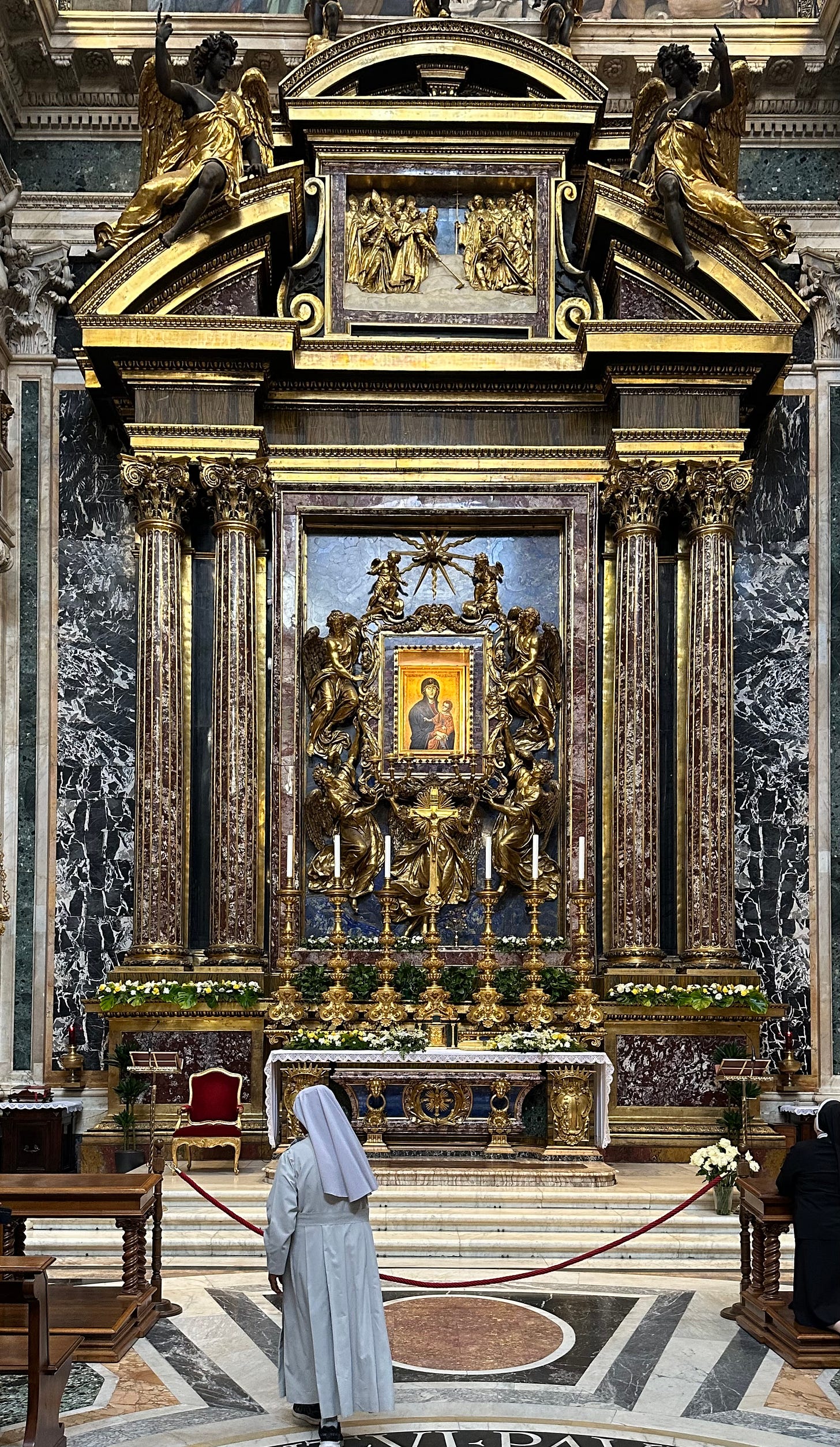Late last month, and following the wishes stipulated in his will, Pope Francis was buried in a niche previously used to store candlesticks to the left of the nave of Santa Maria Maggiore. His decision to eschew the traditional burial place of popes in the crypt below St Peter’s Basilica in the Vatican was unusual; the last popes to be buried outside the Vatican walls were Pius IX, whose coffin was taken to San Lorenzo fuori le Mura in 1881, three years after his death; and Leo XIII, whose remains were moved to San Giovanni in Laterano in 1924, twenty-one years after he was first interred at St Peter’s.

Francis’ choice of Santa Maria Maggiore was governed by his devotion to the ancient icon of the Virgin and Child called the Salus Populi Romani (literally “the Salvation of the Roman People”). For centuries (exactly how many is hazy) it watched over the baptistery of the basilica before its peregrinations took it to the main body of the church. Since 1613 it has been housed in the Pauline Chapel, built expressly to house it by Paul V Borghese.
Pope Francis prayed at the icon before departure and upon his return to Rome on every journey he took as Pope, and he said it was the icon which called him to choose the burial place cited in his will. Tradition says the icon, which follows the Byzantine iconography of the Hodegetria (she who shows the way, in which the Virgin indicates the Christ Child) was painted by Saint Luke himself and brought to Rome by Helena, mother of Constantine.
In fact multiple medieval re-paintings have made a certain dating of the image very tricky and dates ranging everywhere from the fifth to the thirteenth centuries have been asserted with confidence on various occasions. In 2018 a major restoration carried out by the Vatican Museums removed some of the over-paintings and used carbon-14 dating on samples of the cedar-wood supports which gave a date no earlier than the ninth century.
Keep reading with a 7-day free trial
Subscribe to Understanding Rome's Newsletter to keep reading this post and get 7 days of free access to the full post archives.




